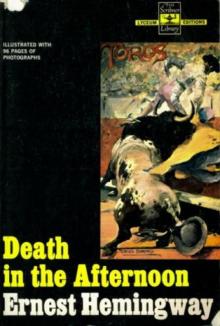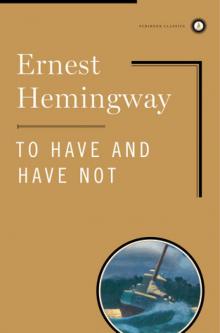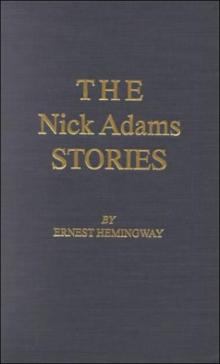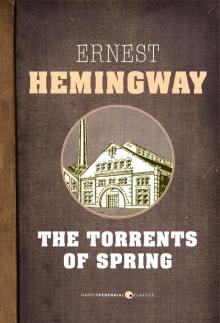- Home
- Ernest Hemingway
Dateline- Toronto Page 2
Dateline- Toronto Read online
Page 2
A Silent, Ghastly Procession Wends Way from Thrace
The Toronto Daily Star, October 20, 1922
Russia Spoiling the French Game
Russia to Spoil the French Game with Kemalists
The Toronto Daily Star, October 23, 1922
Turks Distrust Kemal Pasha
Turks Beginning to Show Distrust of Kemal Pasha
The Toronto Daily Star, October 24, 1922
Near East Censor Too “Thorough”
Censor Too “Thorough” in the Near East Crisis
The Toronto Daily Star, October 25, 1922
“Old Constan”
“Old Constan” in True Light Is Tough Town
The Toronto Daily Star, October 28, 1922
Afghans: Trouble for Britain
Kemal Has Afghans Ready to Make Trouble for Britain
The Toronto Daily Star, October 31, 1922
The Greek Revolt
Betrayal Preceded Defeat, Then Came Greek Revolt
The Toronto Daily Star, November 3, 1922
Kemal’s One Submarine
Destroyers Were On Lookout for Kemal’s One Submarine
The Toronto Daily Star, November 10, 1922
Refugees from Thrace
Refugee Procession Is Scene of Horror
The Toronto Daily Star, November 14, 1922
Mussolini, Europe’s Prize Bluffer
Mussolini, Europe’s Prize Bluffer, More Like Bottomley Than Napoleon
The Toronto Daily Star, January 27, 1923
Russian Uniforms
Gaudy Uniform Is Tchitcherin’s Weakness: A “Chocolate Soldier” of the Soviet Army
The Toronto Daily Star, February 10, 1923
The Franco-German Situation
A Victory Without Peace Forced the French to Undertake the Occupation of the Ruhr
The Toronto Daily Star, April 14, 1923
French Royalist Party
French Royalist Party Most Solidly Organized
The Toronto Daily Star, April 18, 1923
Government Pays for News
Government Pays for News in French Papers
The Toronto Daily Star, April 21, 1923
The “Battle” of Offenburg
Ruhr Commercial War Question of Bankruptcy
The Toronto Daily Star, April 25, 1923
The Belgian Lady and the German Hater
A Brave Belgian Lady Shuts Up German Hater
The Toronto Daily Star, April 28, 1923
Getting into Germany
Getting into Germany Quite a Job, Nowadays
The Toronto Daily Star, May 2, 1923
It’s Easy to Spend a Million Marks
Quite Easy to Spend a Million, If in Marks
The Toronto Daily Star, May 5, 1923
Starvers Out of Sight
Amateur Starvers Keep Out of View in Germany
The Toronto Daily Star, May 9, 1923
Hate in the Ruhr Is Real
Hate in Occupied Zone a Real, Concrete Thing
The Toronto Daily Star, May 12, 1923
French Speed with Movies on the Job
French Register Speed When Movies Are on Job
The Toronto Daily Star, May 16, 1923
King Business in Europe
King Business in Europe Isn’t What It Used to Be
The Toronto Star Weekly, September 15, 1923
Search for Sudbury Coal
Search for Sudbury Coal a Gamble, Driller Tells of What He Has Found
The Toronto Daily Star, September 25, 1923
Japanese Earthquake
Tossed About on Land Like Ships in a Storm (unsigned)
The Toronto Daily Star, September 25, 1923
Lord Birkenhead
He’s a Personality, No Doubt, but a Much Maligned One (unsigned)
The Toronto Daily Star, October 4, 1923
Lloyd George Willing to Address 10,000
Lloyd George Willing to Address 10,000 Here
The Toronto Daily Star, October 5, 1923
The Arrival of Lloyd George
Lloyd George Up Early as Big Liner Arrives
The Toronto Daily Star, October 5, 1923
The Little Welshman Lands
Little Welshman Lands; Anxious to Play Golf
The Toronto Daily Star, October 6, 1923
Lloyd George’s Wonderful Voice
Wonderful Voice Is Chief Charm of Lloyd George
The Toronto Daily Star, October 6, 1923
Miss Megan George a Hit
Miss Megan George Makes Hit: “A Wonder” Reporters Call Her
The Toronto Daily Star, October 6, 1923
At the Theater with Lloyd George
Lloyd George Attends Theater in New York
The Toronto Star Weekly, October 6, 1923
Hearst Not Paying Lloyd George
Cope Denies Hearst Paying Lloyd George
The Toronto Star Weekly, October 6, 1923
“A Man of the People”
“A Man of the People, Will Fight for the People” (unsigned)
The Toronto Daily Star, October 8, 1923
Count Apponyi and the Loan
Hungarian Statesman Delighted with Loan (unsigned)
The Toronto Daily Star, October 15, 1923
Bullfighting a Tragedy
Bull-Fighting Is Not a Sport-It Is a Tragedy
The Toronto Star Weekly, October 20, 1923
Pamplona in July
World’s Series of Bull Fighting a Mad, Whirling Carnival
The Toronto Star Weekly, October 27, 1923
Game-Shooting in Europe
More Game to Shoot in Crowded Europe Than in Ontario; Forests and Animals Are Really Protected Over there
The Toronto Daily Star, November 3, 1923
The Lakes Aren’t Going Dry
Cheer Up! The Lakes Aren’t Going Dry: High Up and Low Down Is Just Their Habit (by John Hadley)
The Toronto Star Weekly, November 17, 1923
Trout Fishing in Europe
Trout Fishing All Across Europe: Spain Has the Best, Then Germany
The Toronto Star Weekly, November 17, 1923
Gargoyles as Symbol
Is France’s Present Attitude Toward Germany Symbolized in the Gargoyles of Notre Dame? (unsigned)
The Toronto Star Weekly, November 17, 1923
The Sport of Kings
The Sport of Kings (by Hem.)
The Toronto Star Weekly, November 24, 1923
Wild Gastronomic Adventures of a Gourmet
Wild Gastronomic Adventures of a Gourmet, Eating Sea Slugs, Snails, Octopus, etc. for Fun (by Peter Jackson)
The Toronto Star Weekly, November 24, 1923
The Big Dance on the Hill
The Big Dance on the Hill
The Toronto Star Weekly, November 24, 1923
Wolfe’s Diaries
Gen. Wolfe’s Diaries Saved for Canada
The Toronto Star Weekly, November 24, 1923
Tancredo Is Dead
Tancredo Is Dead
The Toronto Star Weekly, November 24, 1923
“Nobelman” Yeats
Learns to Commune with the Fairies, Now Wins the $40,000 Nobel Prize (unsigned)
The Toronto Star Weekly, November 24, 1923
Changed Beliefs
Changed Beliefs (By A Foreigner)
The Toronto Star Weekly, November 24, 1923
Bank Vaults vs. Cracksmen
Fifty-Ton Doors Laugh at Robbers’ Tools, Bank Vaults Defy Scientific Cracksmen
The Toronto Star Weekly, December 1, 1923
Inflation and the German Mark
German Marks Make Last Stand as Real Money in Toronto’s “Ward” (by John Hadley)
The Toronto Star Weekly, December 8, 1923
War Medals for Sale
Lots of War Medals for Sale but Nobody Will Buy Them
The Toronto Star Weekly, December 8, 1923
European Nightlife: A Disease
Night Life in Eu
rope a Disease: Constantinople’s Most Hectic
The Toronto Star Weekly, December 15, 1923
Goiter and Iodine
Dose Whole City’s Water Supply to Cure Goiter by Mass Medication (by John Hadley)
The Toronto Star Weekly, December 15, 1923
I Like Americans
I Like Americans (By A Foreigner)
The Toronto Star Weekly, December 15, 1923
I Like Canadians
I Like Canadians (By A Foreigner)
The Toronto Star Weekly, December 15, 1923
The Blind Man’s Christmas Eve
The Blind Man’s Christmas Eve (by John Hadley)
The Toronto Star Weekly, December 22, 1923
Christmas on the Roof of the World
Christmas on the Roof of the World
The Toronto Star Weekly, December 22, 1923
W. B. Yeats a Nighthawk
W. B. Yeats a Night Hawk: Kept Toronto Host Up (unsigned)
The Toronto Star Weekly, December 22, 1923
Young Communists
Toronto “Red” Children Don’t Know Santa Claus (unsigned)
The Toronto Star Weekly, December 22, 1923
Betting in Toronto
Toronto Is Biggest Betting Place in North America: 10,000 People Bet $100,000 on Horses Every Day
The Toronto Star Weekly, December 29, 1923
McConkey’s 1914 Orgy
Wild New Year’s Eve Gone Forever: Only Ghost of 1914 Party Remains (by John Hadley)
The Toronto Star Weekly, December 29, 1923
Our Modern Amateur Impostors
Weird, Wild Adventures of Some of Our Modern Amateur Impostors
The Toronto Star Weekly, December 29, 1923
Swiss Avalanches
Skiers’ Only Escape from Alpine Avalanche Is to Swim! Snow Slides off Mountain as Fast as Off Roof of House
The Toronto Star Weekly, January 12, 1924
So This Is Chicago
So This Is Chicago
The Toronto Star Weekly, January 19, 1924
The Freiburg Fedora
Must Wear Hats Like Other Folks If You Live in Toronto (by John Hadley)
The Toronto Star Weekly, January 19, 1924
Index
Foreword
by Charles Scribner, Jr.
One of the important facts about Ernest Hemingway is that virtually all his life, from the time he was a boy to the day he died, he thought of himself as a writer—nothing else. That image of himself created his ambition, directed his will, and supplied his greatest satisfaction.
It was in high school that Hemingway’s idea of himself as a writer began to take definite shape. The pretension was reasonable: words came easily to him, and he had a natural sense of style for putting them together. One of the results of his years at the Oak Park and River Forest High School was this realization of his talent. In his senior year he wrote lively reports for the weekly school paper and short stories for its literary magazine. That is not an unusual combination of genres for a schoolboy, but Hemingway never gave it up. Throughout his career he wrote stories and news reports.
The experience of seeing his work in print was as pleasing to him as it is to all writers, but in him it became an addiction. He was always on the lookout for material to use in a story; he was a magpie in that respect, industriously and almost by reflex action storing away in his memory colorful bits and pieces of life. His classmates referred to him as “our Ring Lardner,” the highest compliment they could pay him, and at that time by no means inappropriate. When the time came for him to think about college, it could have been no great surprise to anyone that he chose instead a job as cub reporter on the Kansas City Star. He knew he had a bent for journalism and the job was in line with his secret ambition.
Hemingway’s six-month stint on the Star has been described as an apprenticeship. Valuable in many ways, it provided him with rules for style which were compatible with his own writing instincts. He learned how to dig out the facts of a story and he toiled to describe them simply and directly. He also learned to recognize a good story when he saw one. His image of himself had now developed into the reality of being a professional writer; status—and that particular status—was very important to him.
It is clear that as a writer Hemingway would develop still further beyond the lessons he had learned in Kansas City. He would end up creating a style capable of representing events and truths that lie outside the scope of journalism, and to do that he had a certain amount of unlearning to do. His companions in journalism were impressed not only by his energy on the job, but also by his interest in literature off the job.
Leaving the Star for wartime ambulance service in Italy interrupted his writing, but the variety and vividness of the memories then stored up show that he was still seeing everything with the eye of the reporter.
The first crisis in his career occurred when he got back home. Fired with desire to be a “real” writer, an important writer, he found that the stories he wrote then were rejected over and over again for a whole year.
It must be startling for readers familiar with Hemingway’s later work to read his productions of that period. Stilted in language, these stories seem utterly unlike what we know he had it in him to write. He was clearly getting nowhere. In the straits he was in at the time, it was providential that he managed to obtain a free-lance assignment on the Toronto Star. Almost a chance event, this was one of the most fortunate opportunities that ever came his way. For a writer, there is no substitute for being published and read. The Star gave him an appreciative readership and kept him writing on a regular basis. Between February 1920 and December 1924, he wrote over one hundred and fifty pieces for the Star, ranging from amusing sketches of everyday life close to home—medical fads, tips to campers, political satires, and the like—to firsthand observations of later experiences as a foreign correspondent in postwar Europe.
One of Hemingway’s passions was to get the inside story, the “true gen,” and there was a touch of punditry in his journalism whenever he could set the record straight—whether it had to do with the superiority of one boxer over another, or the “true facts” about something like rum-running into the United States. Even though he was still in his twenties, this “persona” is probably the first appearance of the subsequently famous “Papa Hemingway” figure—that voice of experience and much-traveled source of inside information. In the Star pieces he was certainly heading in that direction.
Another characteristic that one sees in them, as in his later writings, is the uncanny knack for dialogue. He frequently introduced conversations to give his news stories a dramatic dimension.
The comic element of the Toronto articles may surprise those who know only his novels and stories. It is not that Hemingway lacked that vein, as the character of the old lady at the bullfight in Death in the Afternoon makes clear. But in most of his serious writings he chose not to be humorous, perhaps because humor reminded him of his journalism, or perhaps because he felt that his humor was not compatible with high literature.
When Hemingway and his wife, Hadley, traveled to Europe in December 1921, he regularly sent back to the Star human-interest stories describing postwar conditions. The reader is also able to share Hemingway’s first experience of bullfighting, the sport that came to be so important in his writing, and there are of course many spirited accounts of Paris in the Twenties, when artists and writers were breaking new ground. Hemingway would soon become one of the most important of these innovators, but at the time he was listening and learning.
The Star sent him to two international conferences: the International Economic Conference in Genoa and the Lausanne Peace Conference. Later he reported on the war between the Greeks and the Turks and described the haunting plight of the stream of refugees from Thrace.
But his days with the Toronto Star were numbered. When he returned to Toronto shortly before the birth of his first son, John, there was a falling-out between him and the Star’s c
ity editor, Harry Hindmarsh. The latter obviously regarded him as spoiled, and set out to clip his wings. In the stiffness of some of Hemingway’s last news reports for the Star on Sudbury coal and other subjects, one sees that when forced to adopt a less personal style, Hemingway went to the other extreme of impersonality. He did not take kindly to editorial restraint.
By now his energies were almost entirely devoted to imaginative fiction, and his artistic star was rising. Still, throughout his life he would continue to accept journalistic assignments whenever they led him to places that interested him. He covered postwar Italy for The New Republic, the Spanish Civil War for the North American Newspaper Alliance, China for PM, the Royal Air Force for Collier’s, and the bullfights of the “dangerous summer” of 1959 in Spain for Life.
In reading these articles, one must remember that Hemingway did not write them as works of literature. In later life it would infuriate him if his reports and dispatches were mentioned in the same breath as his novels and stories. But he wrote so well that some of his journalistic pieces can stand on an equal footing with his literary work. In fact, he himself promoted a number to that rank when he put together collections of stories.
And again, he wrote so well that the pieces collected here make delightful reading even now, more than half a century after they were written. For readers of Hemingway, these stories will hold as much interest as his letters of the same period. Indeed, the most agreeable way to read this book is as a series of letters home from an enthusiastic, articulate, and perceptive friend—one who probably has a great future as a writer.
Introduction
By 1924 the by-line “By Ernest M. Hemingway” had become familiar to readers of the Toronto Star Weekly and its companion publication the Toronto Daily Star. From February 14, 1920, until September 13, 1924, Hemingway’s pieces appeared in the Star Weekly, and from February 4, 1922, until October 6, 1923, he also contributed to the Daily Star. They were journalism, not short stories or imaginative fiction, but they played an important part in the development of a major American author.
When Hemingway began to write for the Toronto Star, he was completely unknown: his work had been published only in high school periodicals, in Oak Park, Illinois, and in the Kansas City Star, where he was an anonymous cub reporter. By the time his last article was printed in the Canadian newspaper, he had published only a few short stories and two little books in limited editions, Three Stories & Ten Poems (Paris, 1923) and In our time (Paris, 1924); however, his literary career had started. Yet before this career began, Hemingway’s work with the Toronto Star Weekly and the Toronto Daily Star gave him a chance to make a living from his writings, while still in his twenties; an opportunity to see more of the world, especially Europe, at first hand while covering political, social, and military activities; and a few important years, while he was still impressionable and growing, to flex his not-yet-literary muscles. From these years in Toronto, and reporting for Toronto readers as their foreign correspondent, came the creative writer and the author of some of the finest short stories and novels of our time.

 The Old Man and the Sea
The Old Man and the Sea Green Hills of Africa
Green Hills of Africa The Sun Also Rises
The Sun Also Rises Death in the Afternoon
Death in the Afternoon In Our Time
In Our Time For Whom the Bell Tolls
For Whom the Bell Tolls A Farewell to Arms
A Farewell to Arms A Moveable Feast
A Moveable Feast The Complete Short Stories of Ernest Hemingway
The Complete Short Stories of Ernest Hemingway Big Two-Hearted River
Big Two-Hearted River Winner Take Nothing
Winner Take Nothing Islands in the Stream
Islands in the Stream To Have and Have Not
To Have and Have Not The Snows of Kilimanjaro and Other Stories
The Snows of Kilimanjaro and Other Stories Across the River and Into the Trees
Across the River and Into the Trees By-Line Ernest Hemingway
By-Line Ernest Hemingway True at First Light
True at First Light Men Without Women
Men Without Women The Nick Adams Stories
The Nick Adams Stories Dateline- Toronto
Dateline- Toronto The Torrents of Spring
The Torrents of Spring Short Stories
Short Stories